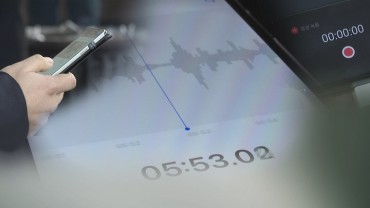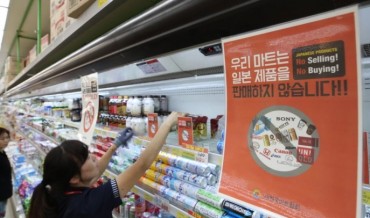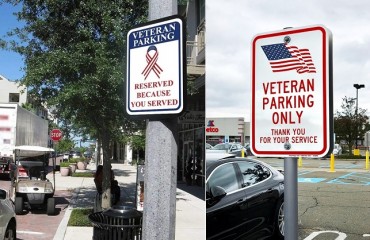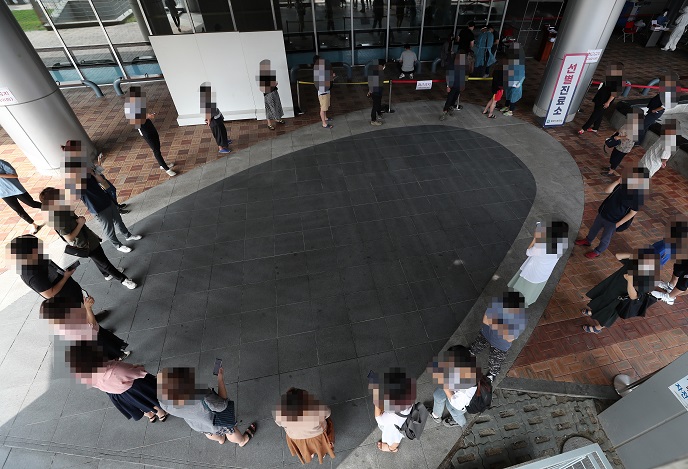
People in Wonju, Gangwon Province, wait to be screened at the city’s community center on Aug. 21, 2020. (Yonhap)
SEOUL, Aug. 22 (Korea Bizwire) — South Korea faces a critical moment before further heightening its social distancing guidelines to the highest level if a decision to expand the current measures nationwide starting Sunday fails to put a break on a continued surge in new virus cases.
On Saturday, the government announced it would be expanding the Level Two social distancing guidelines, currently only applicable in the greater Seoul area, Busan and parts of North Jeolla Province, across the country starting Sunday.
The move came as the country reported 332 new COVID-19 cases, the most since March 8 when 367 new cases were identified, according to the Korea Centers for Disease Control and Prevention (KCDC).
All of the country’s 17 major cities and provinces simultaneously reported infections for the first time since the country reported its first case in January.
Under the latest measure, the second-highest in a three-tier social distancing system, high-risk facilities, including karaoke rooms, clubs, PC cafes and buffets, are restricted from running.
Face-to-face Sunday church services are also banned. Indoor gatherings of 50 or more people and outdoor events involving 100 or more people are strictly prohibited.
Sports games are held in empty stadiums, and schools are advised to cap attendance at one-third of the total in kindergartens, elementary and middle schools and two-thirds in high schools. Schools in areas that reported cluster infections will switch to remote learning starting Wednesday.
Separately, all beaches around the country will be closed from midnight.
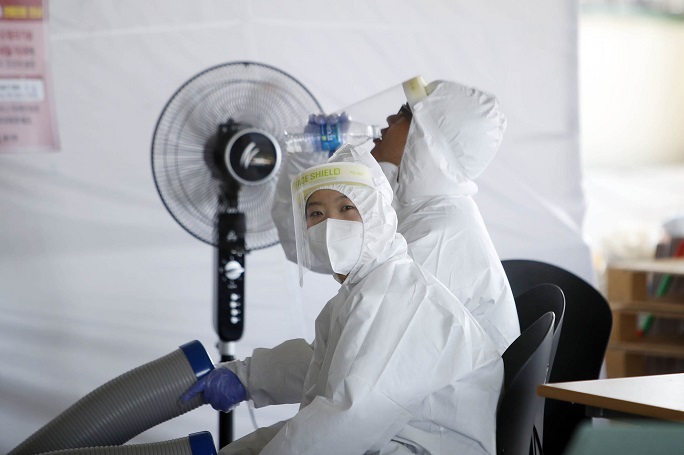
This photo, provided by the Buk Ward office in the southwestern city of Gwangju, shows health workers resting at a screening center on Aug. 20, 2020.
In Seoul, which has already entered Level Two, street rallies of 10 or more people are banned, which is equivalent to a Level Three measure.
Authorities warned that the country may face a more severe situation if the outbreak shows no sign of letting up despite the latest measure.
“If we fail to block the current spread, what waits ahead of us is only a bigger crisis,” Health Minister Park Neunghoo said on Saturday, saying the risk of a bigger crisis as seen in the southeastern areas of Daegu and North Gyeongsang Province is “higher than ever.”
The country suffered its first mass outbreak in February and March as more than 5,000 cases were identified in the southeastern region in relation to the fringe religious sect of Shincheonji.
While the number of infections coming from a single source is smaller than the Shincheonji case, a recent church-related cluster infection has put authorities on alert, with most of the patients being elderly people who are more vulnerable to the new coronavirus.
Of the patients identified in the past two weeks, 773, or 32 percent, of them were aged 65 or older.
Infections coming from unidentified sources have reached 20.2 percent, the highest since health authorities began to tally data in April, raising alert over the virus silently spreading in daily life.
On Friday, KCDC Director Jeong Eun-kyeong said the country may have to raise the current Level Two to the highest Level Three if the spread continues.
“The current priority is to strictly manage (situations) so that the Level Two is properly implemented,” Jeong said, “If that is not kept and if the spread continues, we are at a situation that requires a review of Level Three.”
Jeong stressed that the weekend will likely be the “crucial moment” in tackling the current situation, adding that “all situations, locations and areas” present infection risks as community infections are rampant.
She urged people to refrain from nonessential visits over the weekend.
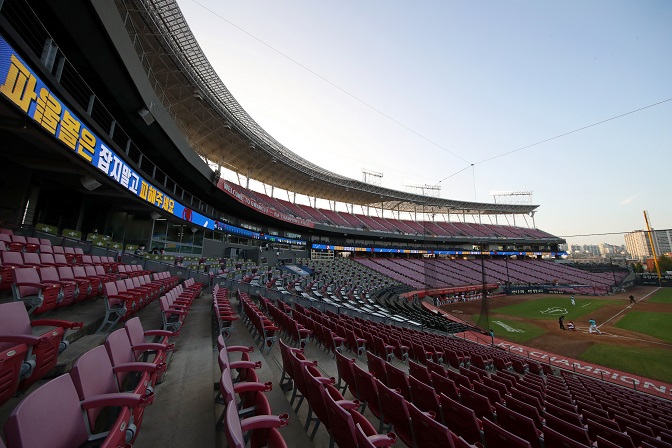
A baseball game between the NC Dinos and Kia Tigers takes place without fans at a stadium in the southwestern city of Gwangju on Aug. 20, 2020. (Yonhap)
Level Three, the highest in a three-tier system, is issued when the number of daily virus cases reaches a two-week average of 100-200 and the doubling of new COVID-19 cases occurs more than twice a week.
Under Level Three, gatherings or 10 or more people are banned, in comparison with Level Two, which bans indoor gatherings of 50 or more people and outdoor gatherings of 100 or more people.
Only essential public and corporate activities are allowed, and companies are advised to mandate remote working. Schools have to suspend all on-site classes, and sports games are banned.
Mid-risk facilities, such as cafes, public baths and wedding halls, also have to close, in comparison with Level Two, which only suspends high-risk facilities, such as nightlife facilities and internet cafes.
The government said it would prudently consider shifting to a Level Three measure, which could prompt massive changes in everyday life.
“If we get to the point of raising the social distancing guidelines to Level Three due to continued spread, a substantial shock will hit the livelihood and daily life of citizens,” Prime Minister Chung Sye-kyun said in a government response meeting early on Saturday.
“If the citizens and the government team up, we can overcome the current crisis.”
(Yonhap)




